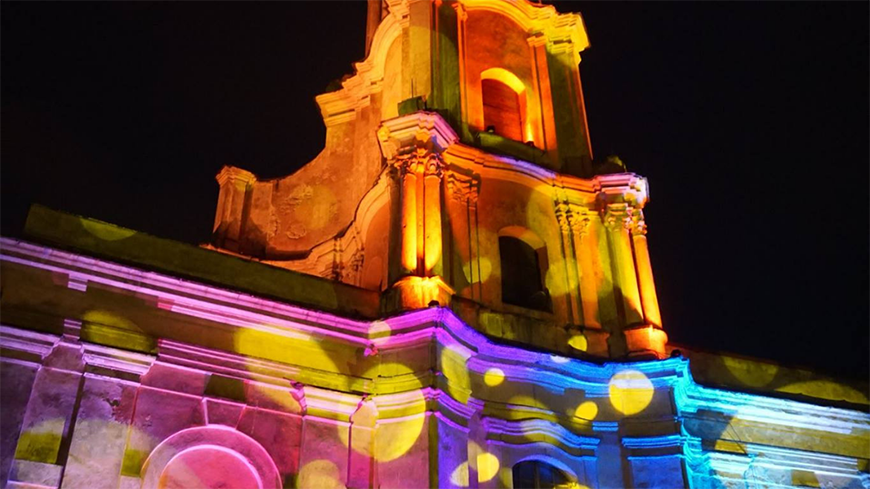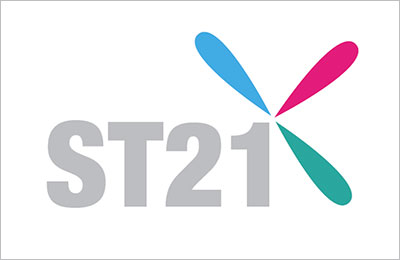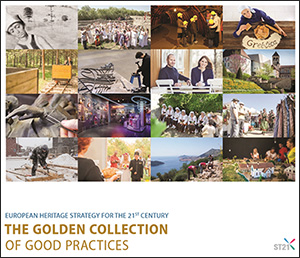Location of the initiative:

Relation to Strategy 21 Recommendations:
Time span of the initiative:
Start Date: 10.08.2017 / End Date: On-going
Motivation / Methodology
The main tool was the involvement of active people who really care about the abundant Church of the blessed Virgin Mary of Consolation in Vilnius. The practice shows that the Ministries; as administrative organs, are usually very big and cumbersome. The above-mentioned Church was under the responsibility of the Ministry of Education for 27 years. During that time, nothing was done to restore the heavily damaged Church in Soviet times. Lithuanian society continued to develop throughout these years and became independent, active and self-confident. Volunteering has become a common thing. So, there was a constellation of conditions that enabled the community to act. This was a religious community that followed the police chaplain that had been assigned to run the Church. Believers wanted to restore the abandoned Church so much that they started offering their time and skills to the Ministry of Interior in order to “eat this big elephant faster”! They started inviting the specialists and becoming involved in the process of restoration. A collaboration began, and this was a positive step that gave perfect results.
Obstacles / Barriers
One of the first obstacles was to establish the different functions for a three-level baroque building. We had the craziest ideas that now seem very strange. We planned everything within a small circle of people, mostly made up of statutory officials. This gave no results. Later, we understood that we would have to get to know the history of the Church in order to develop something meaningful. The more we investigated, the more we understood what functions would be appropriate here (apart from the religious one). When we stopped pushing and hurrying with ideas, the proposal for society started to come. We started to listen to the people. The collaboration and openness gave us positive ideas, and first cultural events demonstrated the needs of society. We started to observe – what society needed. Another obstacle was to establish some order in the community of over 300 hundred people. Everybody worked as volunteers, but criticism about the quality control was challenging. We needed to use ordinary business planning tools to control all the energy everybody possessed and expressed. We set up a structure, assigned responsibilities and a big volunteer organism had started to function, testing itself in daily works. Another obstacle was setting up a relationship between community members and the representatives of the Ministry of the Interior. Finally, we set a principle of having one contact person, making organisation easier. We are still facing legal obstacles regarding the unusual situation as to whether the building belongs to the Ministry of the Interior or the Curia. We are in the process of finding the best way to advance and restore the Church.
Change / Impact
Some time has passed since the Ministry of the Interior took over responsibility for the Church from the Ministry of Education. Now most of the citizens of Vilnius know the Church of the blessed Virgin Mary of Consolation and have probably visited it several times. It has become a meeting place, hospitality for people from all walks of life, the place for believers and non-believers, the place where the art of young people can be started, the place for good culture – where concerts, exhibitions, lectures, workshops are being organised. Most importantly, it has become a very attractive religious space for many believers. The consecrated third floor is becoming too small to welcome all believers. In spite of this fact, it is still not renovated and kept as it is. The multi-functional building has flourished and has great potential to further develop and shape the impact of many people, since more social activities will be organised that are so important to the community. Not to mention the physical changes of the spaces. People coming to the space a year later cannot believe the changes that have taken place: the reading room, sacristy, toilets, spaces for lectures, children’s play room and the chapel have not been renovated as such but changed with simple means that still have a great effect.
Lessons learned
The initiative is an on-going one and many lessons will be taken into consideration, but there are still lessons to be mentioned. We have realised that consistency is the key to all “elephant size works”, because all of them need time to reach a certain level of maturity. At the very beginning, we did not know where to start. What optimum function should be given to a building that has been abandoned for 27 years? There was a strong desire to make the changes immediately: install the heating, light, water, change the windows etc. The police chaplain who had been assigned to run the Church wanted to hold his first holy mass as soon as possible, but the real picture was different. There was no money, only a strong will. It took us 10 months to prepare the Church of the blessed Virgin Mary of Consolation for the first mass since its consecration 250 years ago. We understood that all actions have their time. Transparency and publicity are the best remedies for solving delicate problems, such as what structural parts from Soviet times should be mounted? There were cases when people wanted to offer their time and services to make short cuts, but we decided to remain consistent and develop our big picture step by step. All the heavy work was carried out thanks to volunteers’ time and energy. We decided to ask the public for an opinion, to discuss on issues that were very important to many people, because heritage belongs to all of us. Now we are on the way to an architectural concept, and nobody knows quite how it will look because we will organise a workshop and competition in order to have ideas from people who do care about heritage and its future. We are in the research and investigation phase – preparing all the necessary data for architects to start their vision. This takes longer, but is a more transparent and reliable way. Our motto is – keep calm. The solutions will come.
Online resources
Facebook Ramintoja
Contact information
Laura Kairienė
VšĮ “Ramintoja”
[email protected]
www.ramintoja.lt
Source of financing
- Public financing
- Private financing
Financing details
The Ministry of the Interior funded structural reinforcement works, electrical, heating and water installation works and carried out investigations concerning the construction status etc. On the initiative of the community members, together with the Ministry of the Interior was the application delivered for architectural, archaeological and historical research and the funding was obtained. The community initiated the roof repairs, and still donates to the quadratura painting salvation works, promotes open discussions regarding heritage and other cultural events that are being held in the Church. It is in active dialogue with possible sponsors and writes the projects. The web page with the list of works for donations is being developed and will be launched soon.





